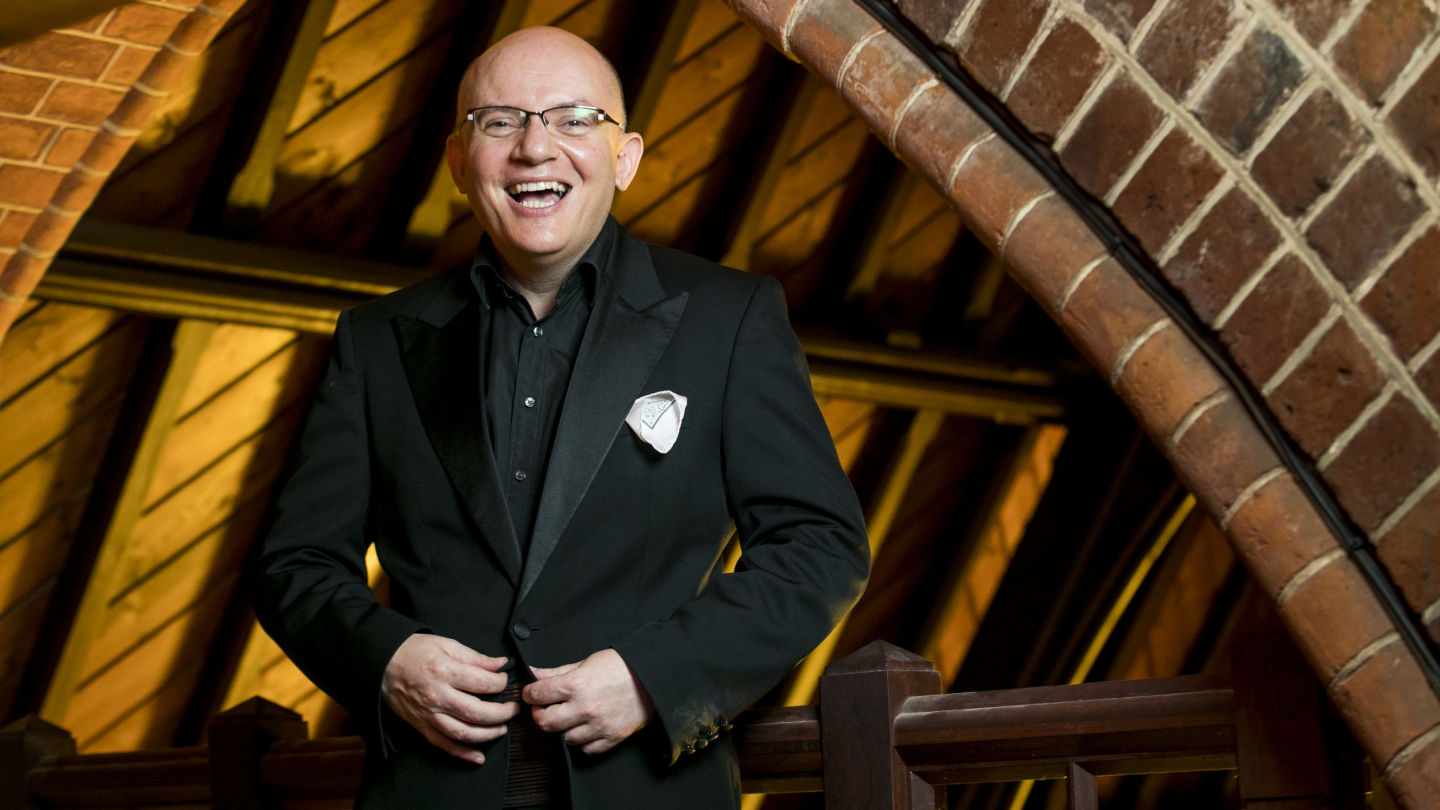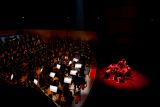Joseph Nolan demystifies famous organ music
Blog ·

Joseph Nolan pictured at the famous organ of La Madeleine, Paris
From sombre tunes to powerful solos, the organ is an incredible and diverse instrument (and not one you can keep at home!). To learn more we sat down with award-winning organist Joseph Nolan and asked him to debunk some of the most famous and recognisable organ music in history.
#Camille Saint-Saëns - Symphony No. 3 "Organ" – Finale
Saint-Saëns was, by all accounts, a fabulous organist. He was organist of the famous Parisian church, La Madeleine, and is one of the very few organist composers to be a household name. Without doubt, Saint-Saëns’ Organ Symphony and Carnival of the Animals are mainly responsible for his fame. The Organ Symphony is orchestrated so beautifully and its sense of melody and sweep is utterly beguiling.
However, for me, the real secret to the success of this work is three-fold. In the first instance, Saint-Saëns reserves the first introduction of the organ quite late in the day. He introduces the organ in a very serene and chorale like manner against string writing that keeps the music moving forward. Saint-Saëns finishes the chorale movement ever so gently and calmly, then with a stroke of genius, the famous C major chord in the organ heralds the Finale of the Symphony. It is a matter of interest that Saint-Saëns marks this chord forte (loud) but every performance and recording I have ever heard, or been involved with, has this chord played (ff-fff). I remember playing this very chord at Sydney Opera House with the Sydney Symphony Orchestra last year. The console has a camera so the organist can follow the conductor (in this case David Robertson) and I remember the look of sheer joy and amazement from the audience members behind David when I played ‘the chord’. My second point would be that Saint-Saëns, who dedicated this work to Liszt and thought it to be his very best work, uses wave upon wave of semi-climaxes particularly successfully. Throw in that the organ and brass instruments are an ideal match as a colour means that the Organ Symphony really does has everything.
#Johann Sebastian Bach - Toccata and Fugue in D minor
This work is regarded as ubiquitous by most organists. There has been a lot of conjecture, especially from the renowned Bach scholar, Peter Williams, that J.S. Bach may have not written the work at all. Mr Williams has also argued it might been written for the violin rather than the organ. Others speculate that it is most certainly written by J.S. Bach and that he used this virtuoso work to show off newly built organs. Of course, as is the case with so much music of the Baroque period, no one really knows for certain.
I have used the word ubiquitous to describe this particular Toccata and Fugue (BWV 565) because it has been so over played in performance and on record. If you are a modern day performer, do you play it ‘straight’ or do you attempt something ‘new’ with many improvised ornaments and indeed, an improvised cadenza? When I performed this work for WASO and Musica Viva at Perth Concert Hall last year, I opted for somewhere in between these approaches. I added quite a few ornaments, extra scalic passages and a small scale improvised cadenza towards the end of the piece. Registration changes (the sounds of the organ) were kept to a reasonable minimum. These simply were not possible in Bach’s day as the stops were set too far away from the player.
In short, I tried to create something new, but also to honour the integrity of the style and period of the time.
#Francis Poulenc - Concerto for Organ, Timpani and Strings in G minor
I am huge fan of all of Poulenc’s compositions. Poulenc’s choral writing is utterly sensational with the fast and constantly changing moods reflecting his allegedly schizophrenic personality.
The Organ Concerto offers these vivid variations of mood and colour, but the structure and length are perfect and display consummate compositional discipline. The organ is pitched against strings and timpani and this creates an austere, but really interesting, sound world. This sound world alternates between powerful organum organ chords, sizzling string writing or far more lush string sounds that are almost reminiscent of Debussy. The thud of the Timpani strokes add a sense of doom and drama.
The opening and concluding Tutti flourishes from the organ are taken from Bach’s famous Fantasia in G Minor BVW 542. Poulenc was no organist so he invited his friend, the famous organist and composer, Maurice Durufle, to provide all the registrations and to give the first performance (conducted by Nadia Boulanger).
For me personally, the concerto is, at heart, an almost religious neo Baroque masterwork. Whilst playing the notes are not all that hard, the soul and mystery of this piece can remain elusive - working with the conductor and the orchestra as a team are the key to success.



